
Globally the induction sealing machine market was worth USD 113.2 million back in 2021 and is expected to reach USD 169.67 million by 20311. The reason for the technology’s continued market growth is the range of benefits it delivers. However, to determine the most suitable induction heat sealing liner to choose for any packaging application, the container’s material, its product type and production volume all have a part to play. Also, an often overlooked factor is where in the world the product is being packaged, and its journey down the process packaging supply chain. As more and more is understood about the challenges that influence sealing success, how can producers ensure the best seal for each and every product?
Before jumping into the specifics of induction heat sealing, let’s take a moment to recap why it is such a popular sealing method across the globe:
When the electromagnetic field heats the aluminium foil in the liner it activates the seal layer on the liner, and the activated seal bonds the foil to the container, creating a hermetic seal. To achieve a hermetic seal to glass containers a special type of heat seal layer is required (see GlassFuze™ boxout).
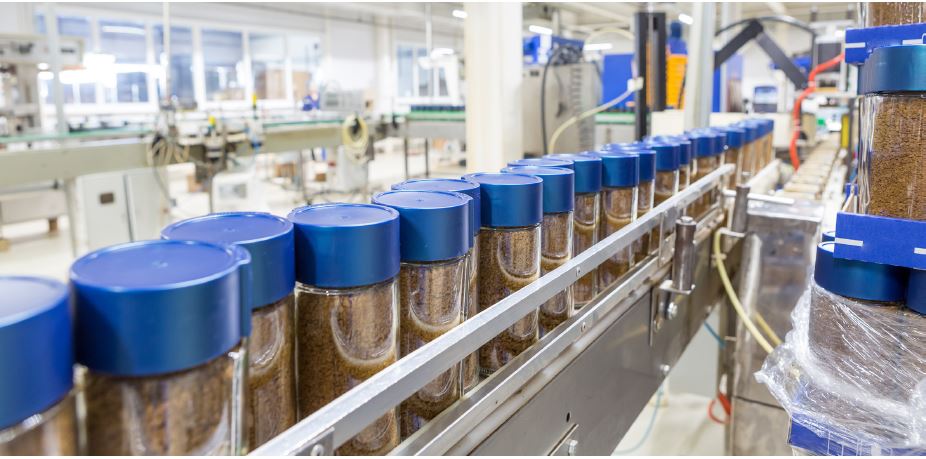
The creation of a hermetic seal means moisture, air and other contaminants are prevented from entering the container, extending the product’s shelf-life.
Although there are clean peel liner options available, the process of sealing the foil to the container traditionally means that a tamper-evident seal is created. This is of key importance in applications such as food, beverages and pharmaceutical.
The liners can be branded, allowing for increased opportunities for a brand to communicate their messaging to the consumer. Security printed liners can also be used if additional anti-counterfitting measures are needed.
As induction heat sealing involves no direct contact between the sealing equipment and the product, contamination risks are minimised.
Easily integrated into automated packaging lines, induction sealing equipment can promote fast, efficient production processes.
Induction heat sealing seals the material in a targeted way, with no need for pre-heating, therefore overall energy consumption is kept to a minimum, unlike traditional conduction sealing.
Induction heat sealing delivers reliable and consistent seal quality. And as long as the right liner and container combination is chosen to meet the product’s process production and geographical demands, the seal will not be affected by ambient temperature or other environmental conditions.
When it comes to induction heat sealing problems that producers approach Selig to help them solve, the most frequent are:
Peelability and bond strength problems are top of the list for producers who come to Selig looking for solutions. Power, time, heat and choice of liner needs to be carefully managed to stop premature delamination of the foil from the backing before sealing, or the backing pulling out from the cap, onto the top of the foil and getting stuck on the container. Also, in the context of sealing liners to glass jars, the resin technology needs to be fine-tuned depending on the contents being sealed and the humidity, heat or altitude the process is being carried out in.
The cut and flatness of the liner is vital for a consistent seal. Either purchased as pre-cuts or as tape, it is important that the liner manufacturer is able to deliver a clean cut liner that has no damage between the foil and the backing at the cut edge. Bad cutting can cause contamination on the foil surface. Liners can also be cut in such a way as they are prone to curling once cut, increasing the potential for machine jams, causing a loss in production efficiency.
Taking coffee as an example, it is likely to be manufactured, sealed and distributed from hotter countries. However maintaining the stability of product as it moves through hot climates, particularly as heat, humidity and altitude pressure variations can stress seals. A heat seal that can perform in these challenging conditions, such as Selig’s GlassFuze™ is needed to ensure the integrity of the finished product is maintained from production site to end customer.
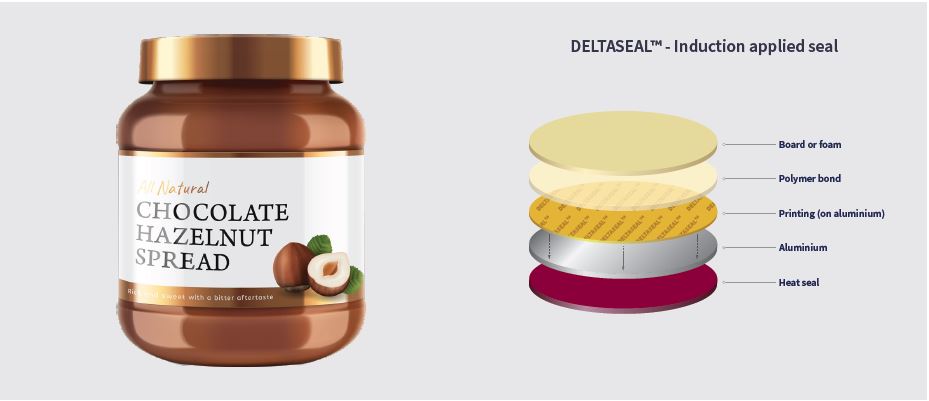
The polymer bond strength between a liner’s foil and backing – and in the case of glass containers the adhesive technology it is used with – all matters to ensure there are no peel or bond issues, as does the liner producer’s manufacturing processes. Here is how Selig overcomes such issues to deliver consistent sealing around the world.
Selig has full control over the production of its liners and can go from print and lacquer to lamination within the same facility and sequence of manufacturing. For foam backed liners, the foam is produced in Selig’s Centre of Excellence in France. It is then shipped to the UK manufacturing facility where the foam is polymer bonded and the foil added. Thanks to investment in machinery and process control, all punched disks and tape are completed in-house and to the highest quality control standards.
Selig’s DELTASEAL™ is a two-piece induction applied liner with a polymer bonded reseal liner. Available in board or foam options, the foam products can be created in thicknesses ranging from 1 mm to 4 mm. It has negligible retained solvent, compared to competitors’ membranes, as Selig uses water-based printing inks. Also, testing has shown greater peelable bond strength stability over the course of time, compared to liners made from other liner manufactures that use outsourced materials.
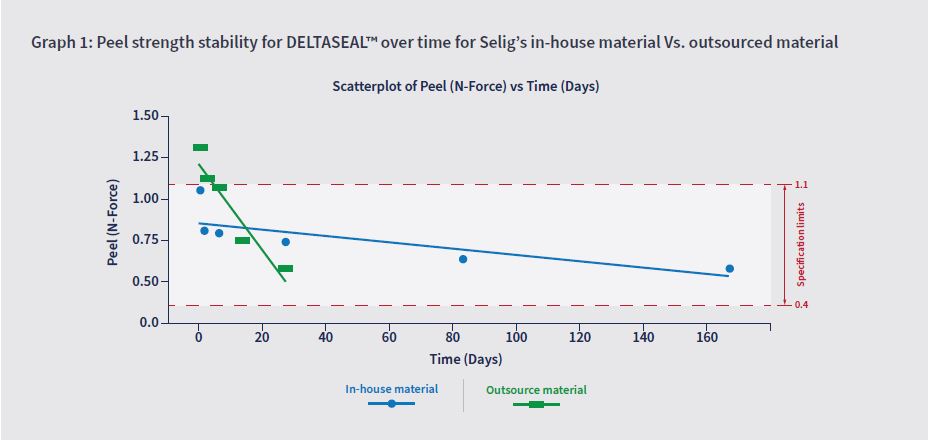
Selig is able to deliver a peel range that fits standard specifications where possible, to ensure good performance and consistency. For example, Selig’s DELTASEAL™ liner has greater consistency in its peelability over time when Selig’s in-house foil is used, compared to outsourced foil.
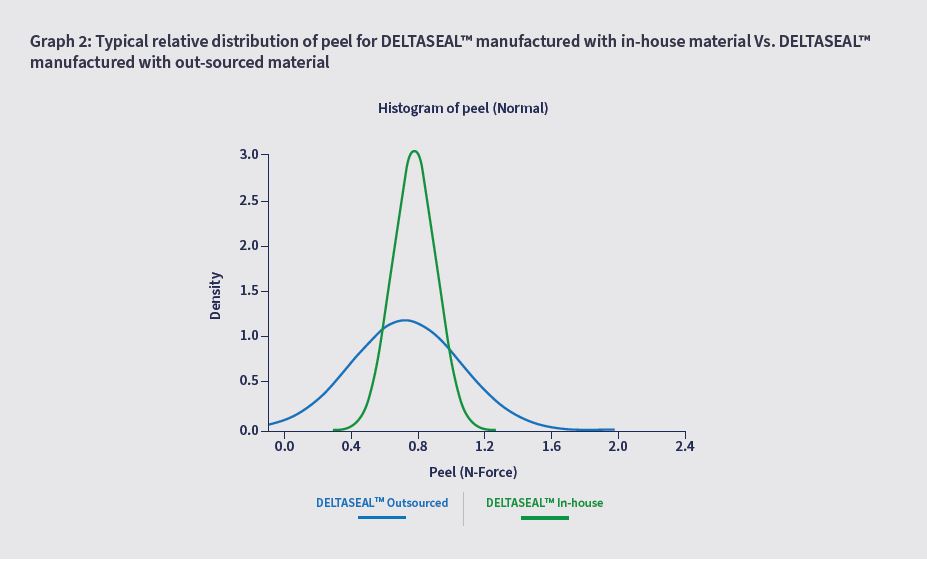
It is particularly challenging to seal glass containers and deliver high performance in hot or humid conditions. Selig’s GlassFuze™ heat seal technology can be used with the liners such as DELTASEAL™ to create a hermetic seal, even when the product contains oils, spices or fats. GlassFuze™ also performs well during altitude pressure changes, making it the ideal solution for glass products that are transported across the globe.
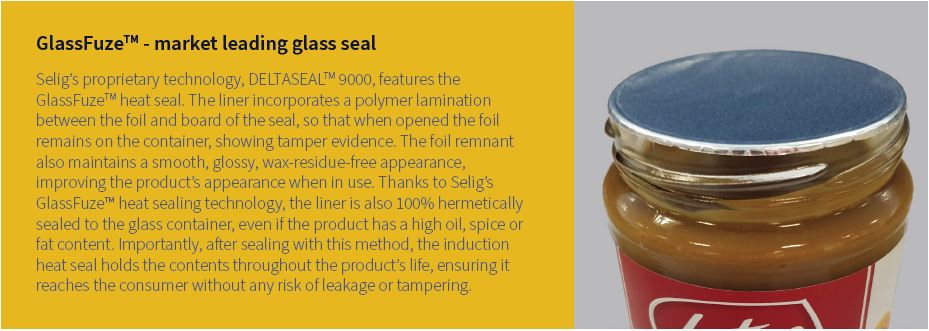
Keeping pace with the environmental agenda and customer demands can have producers playing catch up when it comes to their packaging. Liners are at present not required to be part of any recyclability schemes. However, for those wanting to facilitate closed loop and clean recycling streams, there are options available. Also for producers wanting to push the boundaries of container design, highly effective sealing can be achieved.
Liners have a part to play in achieving a clean recycling stream. From an environmental point of view, the foam backing can be matched to the closure material (for example PE to PE or PP to PP), to allow for the recycling of the final package.
Also, if the foil sealing any glass containers meets the deadfold test for aluminium (where it creates a crease when folded in half), then it too can be considered to be aluminium and put in the relevant recycling container once removed from the glass jar.
Foam liners lend themselves to square as well as round cap designs, as the cap orientates to the jar and the seating lugs in it, rather than being screwed on, as with cylindrical containers. With a square cap the liner and cap have to marry exactly and thanks to Selig’s exacting process control, great success has been achieved in delivering high quality square liner solutions for producers from a range of applications.
Induction sealing has a crucial part to play in product shelf-life and integrity. However, to ensure success for each application, no matter where in the world the technology is being used, the factors influencing sealing success need to be understood and factored in. Working with an experienced induction heat sealing supplier can help producers overcome any induction heat sealing pain points and boost a brand’s reputation.
Why not visit www.seliggroup.com to find out how DELTASEAL™ can help remove your induction heat sealing pain points?
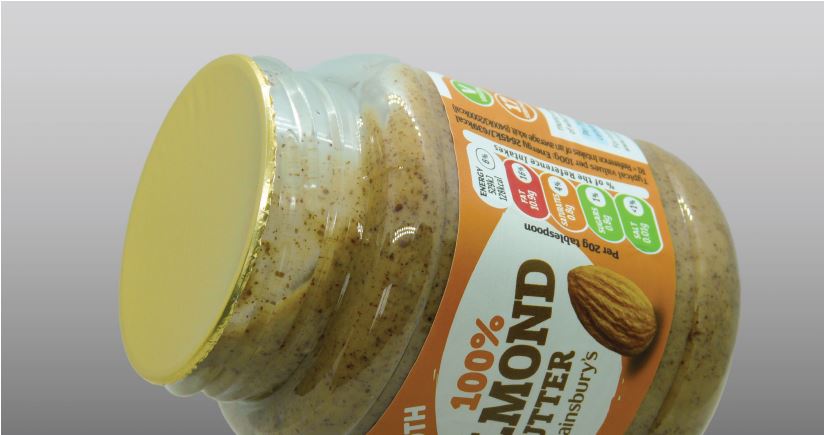
感谢您创建账户,我们将更加高效、快速地为您服务。
我们向您发送了一封邮件,以此来验证您的账户。